The blog of cooking-ez.com
Different kinds of pastry and dough
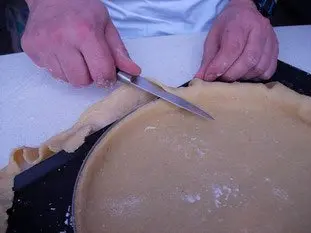
When cooking in general, and particularly in baking, we can make and use many different kinds of pastry and dough. All built on the same "base": flour - a powder to which we add fat, liquid or both to produce the dough which is then cooked.
Last modified on: November 6th 2012
Different kinds of pastry and dough
Here is a brief overview of these different doughs.
[Translator's note: in French, all doughs, pastries, batters and pasta are covered by just one word: “pâtes” , a feature of the original article that has been somewhat lost in this English version!]
Shortcrust pastry (pâte brisée) is the most basic pastry, used for sweet or savoury tarts (it contains little or no sugar). The French version consists of around 50% flour and 50% butter and eggs. The British version is plainer: without eggs and traditionally made with lard (these days, this is more usually a white vegetable fat, possibly with some butter).
This is the pastry of our grandmothers, particularly my own, Jeanne, who made tarts for me when I was a nipper with apples from her orchard – a memory that still moves me.
Sweetcrust pastry
Sweetcrust pastry (pâte sablée) is the pastry for sweet tarts. This is similar to shortcrust pastry, but with 15% sugar added, sometimes also (a great improvement!) with 15% ground almonds. It is fragile and crumbly, delicious on its own, so can be used just as it is to make biscuits.
Choux pastry (pâte à choux) is the famous French dough used for éclairs, Saint-Honoré and profiteroles. It starts as a butter+water+milk+flour mixture, called “panade” in French, into which eggs are then incorporated. During cooking, the water contained in the dough turns to steam to form bubbles. This is trapped by the light crust forming on the outside, causing the choux pastry to puff up.
Puff or flaky pastry (pâte feuilletée) is used for thin tart bases, pies, pasties, turnovers, mille-feuilles. This is a more technically involved pastry, consisting of a basic dough (the "détrempe" in French,) which is like a shortcrust pastry made with more water. This is rolled out and wrapped around a slab of butter, then folded and re-rolled a number of times to produce alternate layers of butter trapped between layers of dough.
During cooking, flaky layers form within the dough. The butter melts and the water turns to steam, so creating the puff pastry's characteristic light open texture.
Brioche dough is the dough used for brioches, Kouglof and certain types of bread. The name covers rich doughs, made with yeast, which need time to rise. Brioche dough is enriched with butter and eggs and is best handled cold (the butter keeps it firm), but should then be left in a warm place to rise.
Croissant dough is a flaky raised dough used to make croissants and "pains au chocolat". It is like a sweetened cross between a simple yeast-raised dough and puff pastry. The dough is rolled with butter to create layers and is then left to rise, creating a very light texture. The downside is that it is technically involved and requires a great deal of work.
The dough for fresh pasta is definitely the simplest of all to make: a mixture of flour, eggs and a little salt (a proportion of 1 egg to 100g flour). This dough is designed to be poached, i.e. cooked in boiling water for around 3 minutes.
[Translator's note: in French, all doughs, pastries, batters and pasta are covered by just one word: “pâtes” , a feature of the original article that has been somewhat lost in this English version!]
Shortcrust pastry
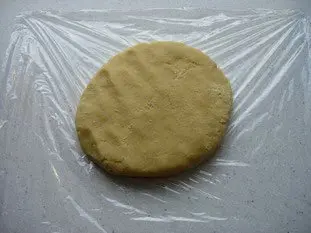
Shortcrust pastry (pâte brisée) is the most basic pastry, used for sweet or savoury tarts (it contains little or no sugar). The French version consists of around 50% flour and 50% butter and eggs. The British version is plainer: without eggs and traditionally made with lard (these days, this is more usually a white vegetable fat, possibly with some butter).
This is the pastry of our grandmothers, particularly my own, Jeanne, who made tarts for me when I was a nipper with apples from her orchard – a memory that still moves me.
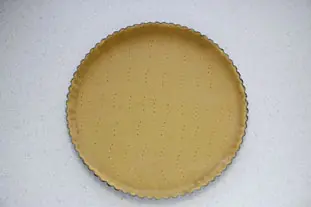
Sweetcrust pastry (pâte sablée) is the pastry for sweet tarts. This is similar to shortcrust pastry, but with 15% sugar added, sometimes also (a great improvement!) with 15% ground almonds. It is fragile and crumbly, delicious on its own, so can be used just as it is to make biscuits.
Choux pastry
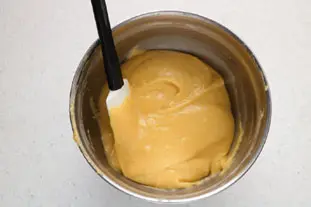
Choux pastry (pâte à choux) is the famous French dough used for éclairs, Saint-Honoré and profiteroles. It starts as a butter+water+milk+flour mixture, called “panade” in French, into which eggs are then incorporated. During cooking, the water contained in the dough turns to steam to form bubbles. This is trapped by the light crust forming on the outside, causing the choux pastry to puff up.
Puff or flaky pastry
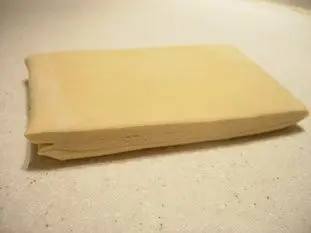
Puff or flaky pastry (pâte feuilletée) is used for thin tart bases, pies, pasties, turnovers, mille-feuilles. This is a more technically involved pastry, consisting of a basic dough (the "détrempe" in French,) which is like a shortcrust pastry made with more water. This is rolled out and wrapped around a slab of butter, then folded and re-rolled a number of times to produce alternate layers of butter trapped between layers of dough.
During cooking, flaky layers form within the dough. The butter melts and the water turns to steam, so creating the puff pastry's characteristic light open texture.
Brioche dough
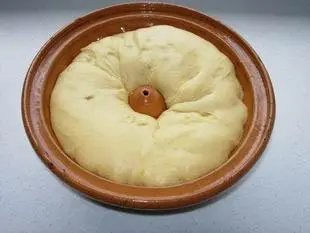
Brioche dough is the dough used for brioches, Kouglof and certain types of bread. The name covers rich doughs, made with yeast, which need time to rise. Brioche dough is enriched with butter and eggs and is best handled cold (the butter keeps it firm), but should then be left in a warm place to rise.
Croissant dough
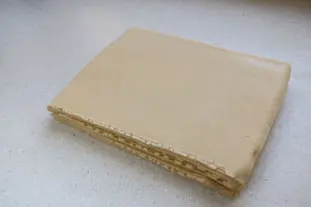
Croissant dough is a flaky raised dough used to make croissants and "pains au chocolat". It is like a sweetened cross between a simple yeast-raised dough and puff pastry. The dough is rolled with butter to create layers and is then left to rise, creating a very light texture. The downside is that it is technically involved and requires a great deal of work.
Fresh pasta dough (for lasagne, spaghetti, etc.)
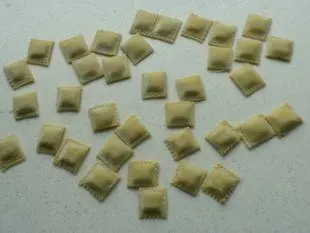
The dough for fresh pasta is definitely the simplest of all to make: a mixture of flour, eggs and a little salt (a proportion of 1 egg to 100g flour). This dough is designed to be poached, i.e. cooked in boiling water for around 3 minutes.
Lasts posts
Wipe meats and fish before cooking
When you want to cook meat or fish, there's a very simple yet very important step to take before you even start: It's to dry, or wipe, each side of the meat or fish, sometimes called "dabbing" or "sponging". But why? And how? Let me explain.3285 April 14th 2024
Toss the salad
When you've finished preparing a salad, green or otherwise, it's usually time to add the dressing and toss. It's often said to "toss the salad", which means to season and mix. Is it easy? Not so easy...2,2705 March 8th 2024
Half milk, half cream
In a multitude of recipes, savoury or sweet, milk is used as the main ingredient, or at least as the main liquid ingredient. Milk is used instead of water, for example, because milk contains a proportion of fat, which adds roundness and softness to the recipe. This mellowness is very pleasant on...2,220 February 27th 2024
Cutting soft cheeses
As you may have already noticed, when you have to use a "soft" cheese in a recipe - their exact name is "soft cheese" - such as Camembert, Munster or Mont d'or, it's not easy to make anything other than thick slices.2,3685 February 20th 2024
It's spinning too fast!
When you need to grate or slice vegetables, you generally use an electric machine that does all the work: a food processor, a mixer with a "slicer" extension or similar. Are these machines really suitable? Generally speaking, yes of course, but there's one criterion that often poses a problem,...5,2535 November 12th 2023
Other pages you may also like
Candied fruits: don't get ripped off
Do you like candied fruit? You might like to nibble a handful or add it to a recipe, like a classic fruit cake or delicious Italian specialities like panettone or sicilian epiphany pie.53K 24.2 June 21th 2017
What is the difference between bakery and patisserie?
This is a question that you may well have asked yourself and which I will attempt to answer. In France the two trades of "boulangerie" (bakery) and "pâtisserie" (patisserie and confectionery) have always been quite distinct, but where exactly do the boundaries lie? .119K 14.1 February 7th 2017
Butter doesn't make you fat, unless you eat too much of it.
Whenever I'm discussing cooking and recipes, there is one idea which comes up frequently, like this: "Oh no! But that's got butter in it" (I should add, for the sake of accuracy, that this is something I hear more frequently from women, who are almost all concerned with keeping their figure). ...37K4.5 March 26th 2012
The golden-brown finish on puff pastry
Let's take a look at the tricky matter of producing puff pastry with an attractive, golden-brown finish. French pastry chefs call this "dorure" (literally, "gilding"). Behind this quirky term there lurks a real problem (and the solution): when using puff pastry (pâte feuilletée) for a pie, or...39K 24.7 February 8th 2018
Stand mixer tools
Whether we call it a stand mixer, food processor, or simply refer to it by brand (Kenwood, KitchenAid, etc.), this machine is a valuable tool for amateur cooks, bakers or pastry chefs like ourselves. All these machines come supplied with 3 different tools. Let’s take a look at their names and...31K4.5 November 2nd 2019
Follow this page (as 2 people already do)
If you are interested in this page, you can "follow" it, by entering your email address here. You will then receive a notification immediately each time the page is modified or a new comment is added. Please note that you will need to confirm this following.
Note: We'll never share your e-mail address with anyone else.
Alternatively: you can subscribe to the mailing list of cooling-ez.com , you will receive a e-mail for each new recipe published on the site.









